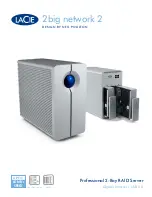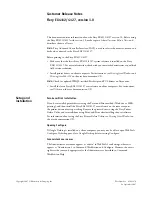
Any sounds produced by a lower quality level noticed by the system users, because these
environments are usually quiet or produce less background noise.
• Satisfactory
In less critical areas like basements, stock rooms, and cold stores, the satisfactory quality
level is usually accepted because they are noisy environments. In a noisy environment
people do not notice an audible click in a conversation, because the environment
produces a lot of background noise. This environmental background noise may also
contain audible clicks. Sometimes, the voice of a user is less audible to the other user
listening at the other end of the conversation because of the background noise.
Use the following points as general guidelines:
• A maximum of 20 percent of the whole coverage is considered as satisfactory.
• Install a hard-wired emergency telephone in those areas where the quality is satisfactory.
This ensures that people can always make a call in case of an emergency.
• If you agree with the customer on lower speech quality, then make sure that this is well
documented and signed by the customer. If the customer becomes dissatisfied
afterwards, you can refer to the agreement. Also, be aware that, if the speech quality is
low in certain areas, the customer may perceive that you delivered a low-quality
system.
• If a lower voice quality level is acceptable, ensure that all calls are received and dropped
calls are avoided.
Coverage calculation
The coverage can be calculated in advance before executing a site survey. Calculation is based
on the following theory.
The transmission path between the DAP and the handset is subject to radio-propagation
related peculiarities, such as:
• Dynamically changing environment
• Signal attenuation due to fixed and moving objects
• Multi-path propagation of the signal
The signal from the transmitter is attenuated in the link before it arrives at the receiver. The
link consists of a transmission path through the air and through obstacles such as walls. The
air and the obstacles cause attenuation called insertion loss. The following table shows typical
insertion losses for some obstacles.
Table 2: Typical insertion losses of some obstacles
Material
Insertion loss (dB)
Glass
2
Site planning and hardware deployment
36 SIP DECT Fundamentals
October 2012
Summary of Contents for CS 1000
Page 6: ...6 SIP DECT Fundamentals October 2012 ...
Page 146: ...System administration 146 SIP DECT Fundamentals October 2012 Comments infodev avaya com ...
Page 174: ...System maintenance 174 SIP DECT Fundamentals October 2012 Comments infodev avaya com ...
Page 204: ...Site survey example 204 SIP DECT Fundamentals October 2012 Comments infodev avaya com ...
















































